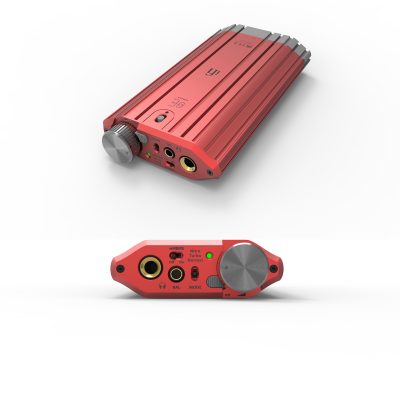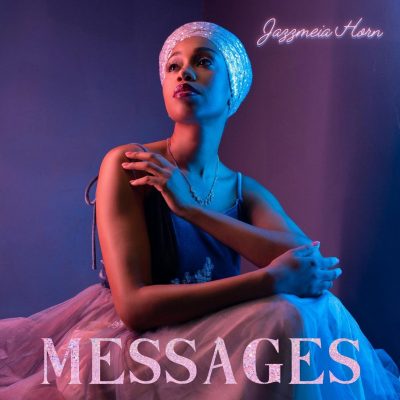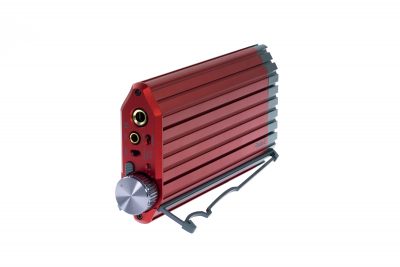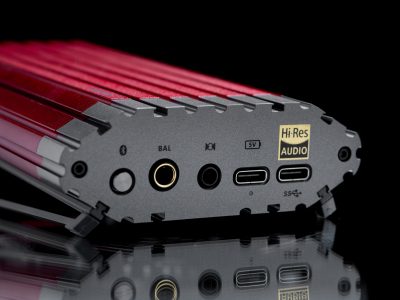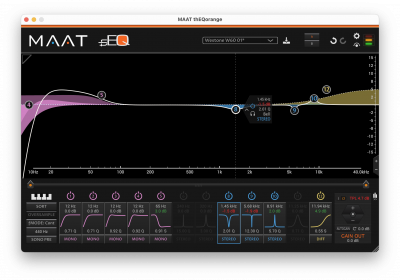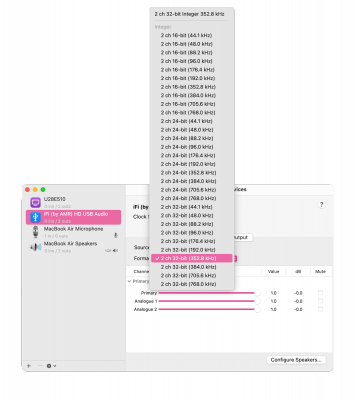iFi Diablo 2 Mobile DAC + HPA
What seems like ages ago, I reviewed iFi audio’s iPurifier3. That was my first personal experience with the brand and, of late, I reached out to them again to solve a new “problem”… You see, my wife and I have been taking road trips for her job. Since I can work anywhere I have a net connection, it’s not an issue for me and I get to see parts of these United States that I normally wouldn’t.
When traveling by plane, I bring IEMs and my reference DAP, a Digital And Analog Calyx M1. DAPs are those all–in–one digital audio players that look like some sort of weird cell phone. However, when traveling by car, we load up on all the conveniences of home since, well, since we can! I always pack some fancy over–the–ear ’phones and a small integrated digital–to–analog converter and headphone amplifier, a DAC/HPA, so I can listen in style while I work. I have several compact DAC/HPAs that I consider worthies; my current fave is the Clarus CODA from Gordon J Technologies. Recently, I realized that I could bring a bigger and, hopefully, more hi–fi DAC/HPA since I’m not constrained by weight or volume. So began the search…
There really aren’t many self–powered DAC/HPAs out there from brands that I trust, so I quickly settled on one from iFi audio. After exchanging several e–mails with their marketing representative, we decided to focus on their iDSD Diablo 2, a slim, cherry red little item about the size of a thin paperback book. To say the Diablo 2 is feature–packed would be an understatement. I won’t go into details here as you can read all about the product’s attributes on its product page but, in brief, I focused on the following features:
- a range of gain setting, from low for IEMs to high for planars
- self–powered in case I wanted to connect to my phone or tablet
- better clocking and lower jitter
- a wider range of sample rates
For an apples–to–apples comparison, I started with my Sony PHA-3 which, like the Diablo 2, is a mobile, self–powered DAC/HPA. I was hoping to improve upon the PHA-3, which is now ten years old. Mine still works great but audio technology marches on, and I expected that I could find an even better performer if I tried.
I started my listening with both the Diablo 2 and PHA-3 plugged into my M1 MacBook Air so it would be easy to quickly change target device settings in Amarra Luxe and replug the cans du jour. I cued up Races Are Run from Andrew Bird’s 2024 Cunningham Bird [Qobuz 96k Loma Vista Records]. Hats off to engineer Mark Viola with Jeff Lipton on the mastering. Normally, I’m not a fan of Bird’s vocal range and texture, but this song’s a bit different. I find the male and female duet on this track reminiscent of The Mastersons. The Sony unit presented a pleasingly warm and soft though indistinct rendition with a flatter soundstage while, with the iFi, the kick drum was less flabby and the plate–like reverb sheen on Madison Cunningham’s isolated vocal on the intro was shinier and more focused. Note that I did not use an “audiophile” cable to connect any of the output hardware. More on that in a bit…
For headphones, first up was my Meze Empyrean, a stellar planar circumaural. Right off the bat, I was hearing more apparent subtlety, more transparency with iFi’s approach. This is not surprising as I have always felt that, in general, the “sound” of DSD is less crisp and more relaxed than an equivalent PCM stream, and that trait carries through to the PHA-3 since it has a DSD heart. Think of this as akin to a non–oversampling DAC compared to a modern oversampling version. After getting both the PHA-3 and Diablo 2 level matched, the first aspect I noticed was a difference in low frequency response. The Diablo 2 had noticeably more gusto in the low end. Not that it was tipped up, just that it sounded as though it went…deeper. Surprisingly to me, there was a delicacy to the iFi that brought forth subtleties in the music that were masked in the Sony.
Chinese American Bear’s Take Me To Beijing (一起回北京) from their Wah!!! release [Qobuz 96k Moshi Moshi Records 2024] via the Diablo 2 is a danceable pop confection with vast washes of synth, pulsating, propulsive bass, truckloads of reverberation and acid–etched vocals. Those vocals were more papery through the PHA–3, and again the soundstage depth was relatively shallow.
The recording of Jazzmeia Horn’s 2024 Messages [Qobuz 48k Empress Legacy Records] is exemplary for “Red Book” 44.1k resolution. Take a bow, recording engineer Christopher Allen along side Katsushiko Naito, who provided mixing and mastering services. On Horn’s track, Tip, her vocal is out front, with the tasteful support of her backing band. I love the percussive elements to this arrangement; Anwar Marshall’s laid back drumming, Eric Wheeler’s slappin’ upright, and Victor Gould’s staccato piano. The iFi lent the proper snap and crispness without overdoing it. If you’ve had any experience with most NOS or non–oversampling DACs, you’ll know they have this particular way with transient response, as though 400 grit paper has sanded down the bite a skosh. It’s the same with the Sony unit and, from my lengthy mastering studio experience, I know this not strictly accurate. Highly musical but, unlike the Diablo 2, not the last word in clarity. The Diablo 2, considering its price point, could be thought of as delivering definitive detail.
Back to interconnects…During this review, I stuck with the high quality braided cable assembly that Meze provided with their cans. For the critical USB–to–DAC link, I used commodity cables knowing that, had I a better quality “audiophile” USB cable at hand, it would have most likely made a further improvement. The Diablo 2 uses USB-C while the older PHA-3 uses the deprecated Micro-B type. The folks at iFi include good quality, very short Lightning and USB-C cables suitable for use with a phone (with a bonus legacy USB-A adapter) but they were too short for my testing configuration. I went with a good quality but too long generic USB-C.† Looks like it’s time for an upgrade to Wireworld’s Starlight 8 USB 3.1!
Once I’d spent some time comparing the Diablo 2 to the PHA-3, I turned to the aforementioned Clarus CODA. Feature–wise, the CODA is bare bones, with no controls save a HUI volume control, a single LED to hint at sample rate, and an ⅛” jack. That LED is one of those coarse indicators, telling you only which multiple of 44.1/48k; 1x, 2x, 3x, or 4x. That happens to be a disappointing feature that both the CODA and Diablo 2 share. For the additional cost, it would be nice to have a more granular sample rate indicator, but remembering color “codes” isn’t ideal either…I’m looking at you, Chord! A HUI volume control calls the operating system, which is useless for volume adjustments when you’re using a dedicated player app, in macOS at least. In terms of drive, the CODA certainly could deliver some beef. Not surprisingly since I was using planars, I used Diablo 2’s Turbo gain mode most of the time. That said, the Normal or minimum gain setting was more that sufficient if I hadn’t needed to level–matching the Diablo 2 to the one–size–fits–all gain of the CODA.
This next listening segment started with the super high rez Six Elizabethan Pastorals, Set 1, Opus 49: No. 2, Diaphenia [Qobuz 192k 2024 CORO] from Stanford: Partsongs, Pastorals and Folksongs as performed by The Sixteen with Harry Christophers conducting. Between the two DAC+HPAs, they were more alike than different. In all the little ways; deeper soundstage, more tactile transients and tighter bass, the Diablo had the advantage over the CODA. Since we are in the budget category, I cannot fail to mention that the CODA costs less than half what the Diablo 2 does.
The smokin’ snippets that are Cookin’ Snoopy (Alternate Take 1, 2 & 3) from the late, great Vince Guaraldi’s You’re Not Elected, Charlie Brown [Qobuz 192k Lee Mendelson Film Productions 2024] was my jazzy refresher after the previous pastoral pleasantries. iFi’s offering brought delicate air to the proceedings. This track and Incumbent Waltz that follows are already precious gems and Diablo 2 managed to gild those lilies.
After spending a goodly amount of time with the Diablo 2, I came to appreciate several less common features…First, there is the physical lock for the volume control. It’s implemented in a simple and straightforward fashion, and I like the thoughtful approach. The volume knob is knurled, and a spring–loaded brake slots into the knob’s grooves when deployed. Simple and elegant. The product has several choices of output, both balanced and unbalanced; ¼” (6.35mm) unbalanced and 4.4mm balanced, all on the front face, with a 4.4mm unbalanced I/O and 3.5mm combo AES-3 unbalanced electrical+optical input on the back. That rear 4.4mm is balanced when used as an output and is single ended when used as an input.
Also on the rear face is a USB-C inlet only for power, and another USB-C jack for an audio connection to your phone, tablet or computer. As one would expect, the machine is USB audio Class–compliant, so connection to my M1 MacBook Air was plug–and–play. Most Windows users would, as usual, need to move into the modern age with iFi’s USB Audio Class 2 driver. An additional benefit; you can power and charge the Diablo 2 while you use it for listening. The supplied wall wart PSU is as interesting as it is purportedly lower noise than is typical. The factory claims it is “…10 times quieter than most audiophile power supplies.” I could hear no difference while running on batteries in self–powered mode or with the unit plugged into mains power with their PSU, which is a good thing.
While the form factor is quite similar to my PHA-3, the Diablo 2 has slots incised lengthwise into its red anodized extruded aluminum case. It ships with two pairs of wispy “wings,” minimalist plastic feet that slot into the, umm, slots. These allow you to set it up in either landscape or portrait mode. In the latter configuration, my preferred arrangement, it takes up minimal real estate.
A few of the Diablo 2’s features I didn’t use…One was the Bluetooth 5.4 input, with support for aptX Lossless. Very kewl but I have no target device that happens to support that codec. Mentioned in passing earlier, the D2 has three power ranges; “Normal for IEMs, Turbo for mid-sensitivity headphones, and Nitro for demanding headphones, boasting a 19.2V maximum output.” In conjunction with those front panel power settings is iFi’s iEMatch technology. “This feature is tailored for high-sensitivity headphones and earphones, greatly benefiting your in-ear monitors (IEMs). It removes background noise and increases the usable volume range.” I stayed in 6.35mm mode for my headphones, all with ¼” or 6.35mm plugs.
Speaking of IEMs, it was time to press into service my two universal–fit references: Westone’s W60 and beyerdynamic’s Xelento Remote. Very different in most respects, the W60 is a six–way BA or Balanced Armature design while the Xelento is a single Tesla dynamic driver. Those divergent approaches each highlight different aspects of the music. Employing the included ⅛”–to–¼” TRS adapter, I started with the W60 and the Diablo 2’s rotary attenuator knob maxed out. With the front panel gain mode switched to Normal, the IEMs were silent when no music was playing. Had I actually been rocking anything at that gain, my ears would have been destroyed. In Turbo mode with no music playing and the volume knob maxed out, a very quiet, very high frequency pinkish noise could barely be perceived. Finally, in Nitro mode, low level broad spectrum pink noise was heard. With the gain switch back in Normal mode and Amarra Luxe at 50% gain, I endeavored to create a default equalization preset for the Westones since I didn’t have one using my company’s linear phase thEQorange. I could easily discern that 1.5dB EQ cut at 1.45kHz, a hallmark of a well behaved playback chain. Subjectively, I simply could find no fault with either conversion to analog nor amplification. As usual, the W60 were bottom–up dark, full and robust, while the Xelento were top–down airy, vivid and all of a piece.
Another feature, a bold move to cement category leadership, is the incorporation of specific support for xMEMS Labs’ piezoMEMS in–ears. MEMS or micro-electromechanical systems are solid state transducers that are fabricated in silicon in the same way that “chip” electronics are made. The piezo in the name tells us that, when an electrical potential is applied to the component, the silicon deforms in proportion to the applied voltage. This deformation is equivalent to the motion of a dynamic driver when a voltage is applied to its voice coil. The differences are; there are no permanent magnets or field coils needed to generate a magnetic field, and the device can be made using the same extremely precise mass production with which semiconductor chips are constructed. All well and good, but how many of us audio whackjobs actually own a set of xMEMS cans?‡
The marketing crew at iFi sure love their marcom babble…“Diablo 2 features PureWave, Servoless DirectDrive, OptimaLoop, and Advanced Jitter Reduction Technology, delivering exceptionally pure, detailed, and emotionally touching sound, these technologies elevate performance to unparalleled heights, even challenging desktop DAC/amps.” Translating that: The Diablo 2’s amplifier is DC–coupled. It uses no coupling capacitors for a firm and extended low end. As to jitter reduction, the clocking design should be better than average. A combination of those two would result in improved LF control (from DC coupling) and extended response in the bottom (from DC coupling and, unintuitively, also from jitter reduction), while any jitter reduction improves soundstage specificity while reducing digital “grain” and harshness. I can attest to all those improvements compared to my other mobile examples, so they must be doing something right.
The Diablo 2 employs a pair of Burr-Brown DSD1793 monolithic integrated DAC chips. Since each is a stereo device, doubling up reduces noise in the final product by over 3dB. The DSD1793 part is a “segmented DAC,” which improves performance. Walt Kester’s Basic DAC Architectures III tutorial from 2009 opens with this overview…“When we are required to design a DAC with a specific performance, it may well be that no single architecture is ideal. In such cases, two or more DACs may be combined in a single higher resolution DAC to give the required performance. These DACs may be of the same type or of different types and need not each have the same resolution. In principle, one DAC handles the MSBs, another handles the LSBs, and their outputs are added in some way. The process is known as ‘segmentation,’ and these more complex structures are called ‘segmented DACs.’ There are many different types of segmented DACs…” The key advantage of segmentation is that it allows for better handling of high-resolution conversion while relaxing the strict matching requirements that would be needed in a pure multi-bit binary weighted architecture as you might find in a non–oversampling chip.
Whenever I’ve been away from the iDSD Diablo 2 for a while, I’m more than pleasantly surprised when I park a set of Empyrean on my head, cue up Qobuz’s finely curated new releases, and luxuriate in the resulting rich yet accurate sound. The eye catching and robust casework, thoughtful controls, accessories including a handy soft case along with accurate but never harsh sound makes for a compelling package, while the price won’t crush you in debt. I’m sold on this one, and once you hear it, I think you will be too.
THE COMPANY
iFi audio
Southport UK
www.ifi-audio.com
iDSD Diablo 2 $1299 (as tested)
† — With digital audio interconnects, as with analog, shorter is better. With digital, the ≈2MHz (1.536MHz or 384 kbps times 4 to be precise) passband requirement is much higher, whereas analog only need ≈40kHz; kilo versus mega. With poor quality cables and connectors comes narrower bandwidths. As bandwidth narrows, a digital signal’s “eye pattern” or high–to–low transitions also start to degrade. In industry parlance, the “eye closes” which results in a smaller signal–to–noise ratio. In turn, that makes the signal more susceptible to jitter which degrades fidelity. Plus, at the rates that HRA digital audio switches at, it is best to think of an interconnect as a transmission line requiring matching impedance for both wires and connectors. That’s not something one needs to worry about for analog audio.
BTW, all USB interconnects are not equivalent. During my review period, I found that several of my USB-C cables would not pass data, only power. Even more insidious, one of my commodity cables throttled the Diablo 2 to a maximum sample rate of 96k, yet another good reason to spend a bit more when purchasing digital interconnects.
‡ — Current piezoMEMS transducers operate at audio frequencies, but xMEMS and competitors are nearing completion on a more interesting technology. Their upcoming Cypress line will not directly generate audio frequencies. Instead they vibrate at ultrasonic rates, and that energy is interpreted by our ear/brain as audio.
✧ — I have found that; the less expensive a piece of gear is, the less likely the manufacturer is to divulge even the most basic technical info about its design.
